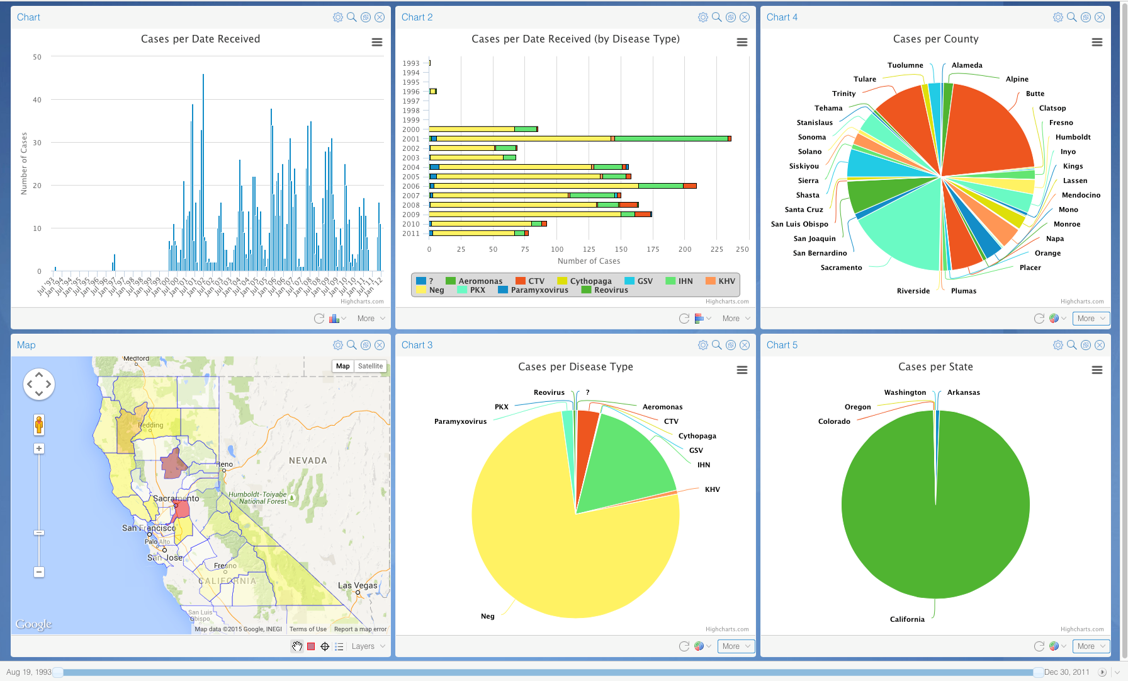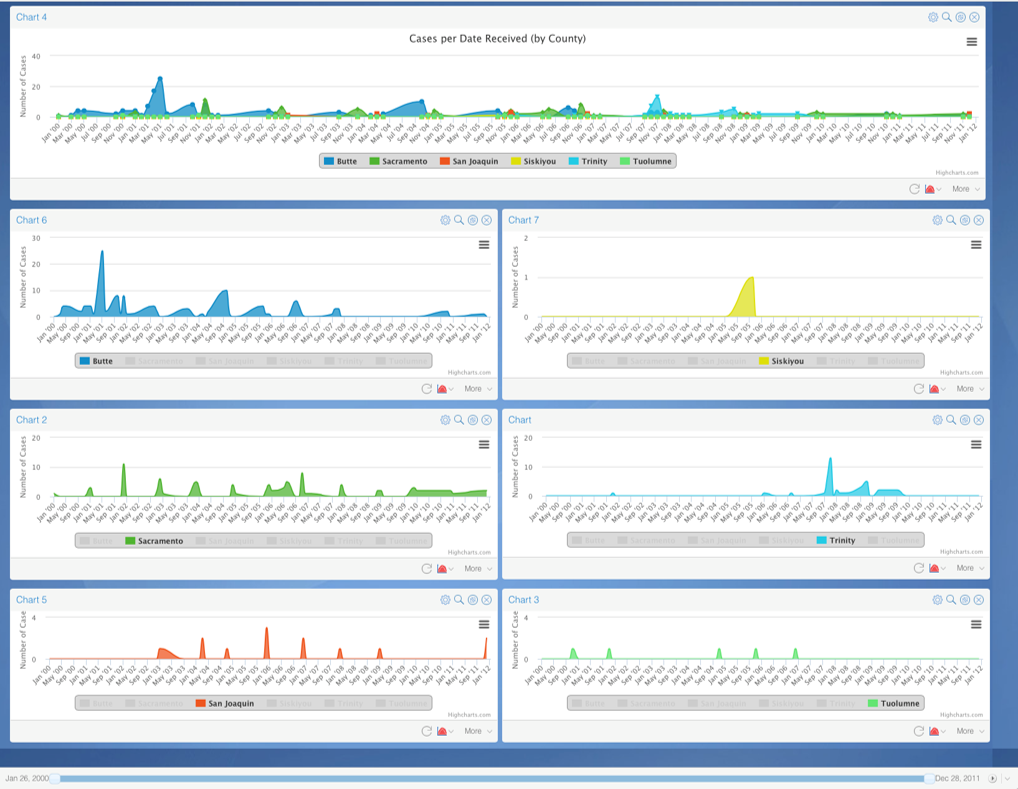Aquaculture is rapidly growing in economic importance in the USA, where California (CA) is considered as an emergent leader aquaculture industry that worth an estimated $110  million [1]. Primary aquaculture species in the state are rainbow trout and various salmon species for which endemic infectious hematopoietic necrosis virus (IHNV), an acute systemic disease [2] and notifiable for the World Animal Health Organization (OIE), that causes high mortality and significant economic and s
million [1]. Primary aquaculture species in the state are rainbow trout and various salmon species for which endemic infectious hematopoietic necrosis virus (IHNV), an acute systemic disease [2] and notifiable for the World Animal Health Organization (OIE), that causes high mortality and significant economic and s![]() ocial losses in hatchery stocks and wild salmonids in fresh waters [3]. IHNV spread in these species has been facilitated by a limited knowledge on the virus distribution, poor knowledge on risk factors, and the lack of an adequate surveillance system. In line with the priorities of the United States Aquatic Animal Health Plan, and with CFAH high priority issues, this project will address a key problem of national importance by analyzing historical monitoring d
ocial losses in hatchery stocks and wild salmonids in fresh waters [3]. IHNV spread in these species has been facilitated by a limited knowledge on the virus distribution, poor knowledge on risk factors, and the lack of an adequate surveillance system. In line with the priorities of the United States Aquatic Animal Health Plan, and with CFAH high priority issues, this project will address a key problem of national importance by analyzing historical monitoring d

ata and by developing a prototype for a near real-time surveillance system for IHNV in CA. During the project, monitoring data that is available and has been systematically compil
ed and organized during the past 20 years will be gathered with host and hatchery data, and selected environmental factors including water temperature, salinity, distance to urban settings, etc. Such database will be used to 1) describe the spatial and temporal patterns of IHNV detection in California, 2) to quantify the na

ture and extent to which environmental factors may be associated with the presence of the virus, and 3) to generate a series of IHNV risk maps varying in space and time using a user-friendly web-based platform
